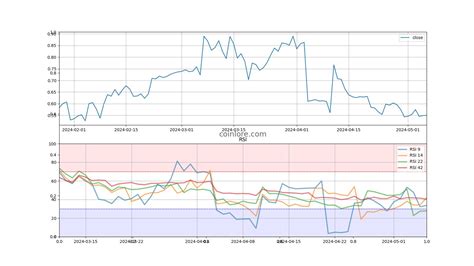Understanding the Building Blocks of a Healthy Economy: A Guide to Governance Tokens, the Relative Strength Index (RSI), and Economic Indicators
As the world becomes increasingly interconnected, it is critical for investors, policymakers, and business leaders to understand the key drivers of economic performance. In this article, we will examine three essential elements that contribute to a healthy economy: governance tokens, the Relative Strength Index (RSI), and economic indicators.
Governance Tokens: A Key to Effective Governance
In recent years, governance tokens have become a powerful tool for improving corporate governance and transparency. These digital assets are issued by companies or governments to facilitate the management of their internal processes, such as voting, allocation of shares, and decision-making. Governance tokens provide an additional layer of oversight, allowing stakeholders to participate in decision-making and promote accountability.
Benefits of governance tokens include:
- Improved efficiency: Tokenization allows companies to automate administrative tasks, freeing up time for more strategic activities.
- Improved transparency: Tokens allow stakeholders to track key metrics such as voting results, stock prices, and financial performance.
- Increased participation: Governance tokens make it easier to involve external investors, employees, or customers in decision-making processes.
Some examples of governance token platforms include:
- Ethereum ERC-20: A widely used token standard that allows companies to issue ERC-20 tokens for various use cases.
- Bitfinex TBX token: A decentralized exchange (DEX) that uses a governance token to facilitate decision-making and voting processes.
Relative Strength Index (RSI): A Measure of Market Volatility
The Relative Strength Index (RSI) is a popular technical analysis tool used by investors to gauge market sentiment. Developed by J. Welles Wilder Jr., the RSI measures the magnitude of recent price movements to determine overbought or oversold conditions.
The RSI is calculated using the following formula:
RSI = 100 – (100 / (1 + RS))
Where RS is the average winning price over the last N periods and the winning percentage is a measure of the direction of the trend.
When to Use RSI:
- Overbought or Oversold Conditions
: The RSI can be used to identify areas where prices are diverging from fundamental values, which can lead to significant market movements.
- Identifying Momentum: The RSI provides an early warning sign of potential price reversals or corrections, helping investors prepare for changing market conditions.
Economic Indicators: A Guide to Market Stability

Economic indicators play a vital role in predicting market performance and influencing monetary policy decisions. These indicators provide insight into the health of the economy and help policymakers respond to changes in global demand.
The most commonly used economic indicators include:
- Gross Domestic Product (GDP) Growth Rate: Reflects the overall expansion or contraction of an economy.
- Inflation Rate: A measure of price stability, which influences interest rates and monetary policy decisions.
- Unemployment Rate: An indicator of labor market conditions, which affects the overall economy.
When to Use Economic Indicators:
- Market Forecasting: Economic indicators provide valuable insights into market trends and can help investors anticipate potential changes.
- Monetary Policy Analysis: Understanding key economic indicators helps policymakers assess the effectiveness of monetary policies in maintaining market stability.
In conclusion, governance tokens, CSR, and economic indicators are essential elements that contribute to a healthy economy.
